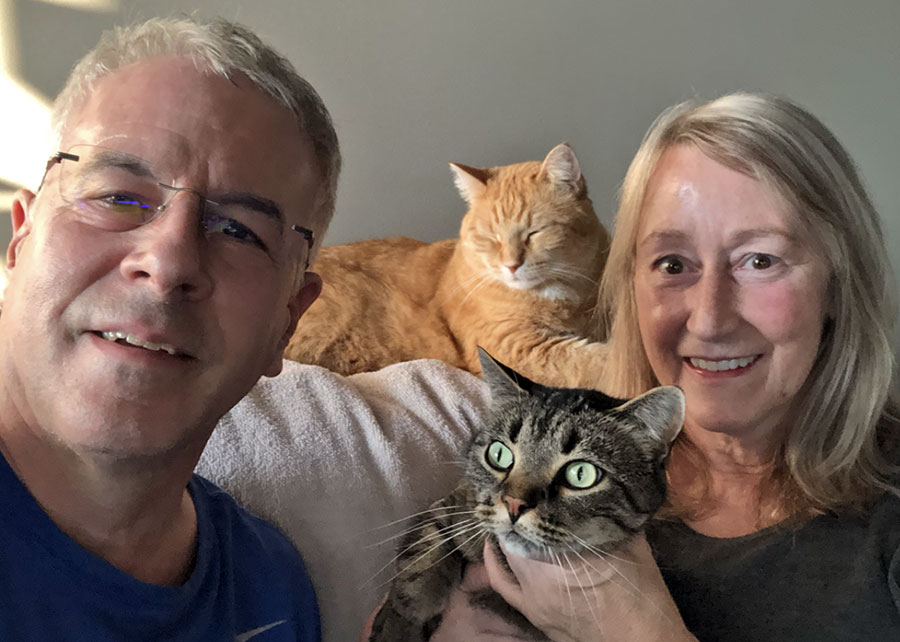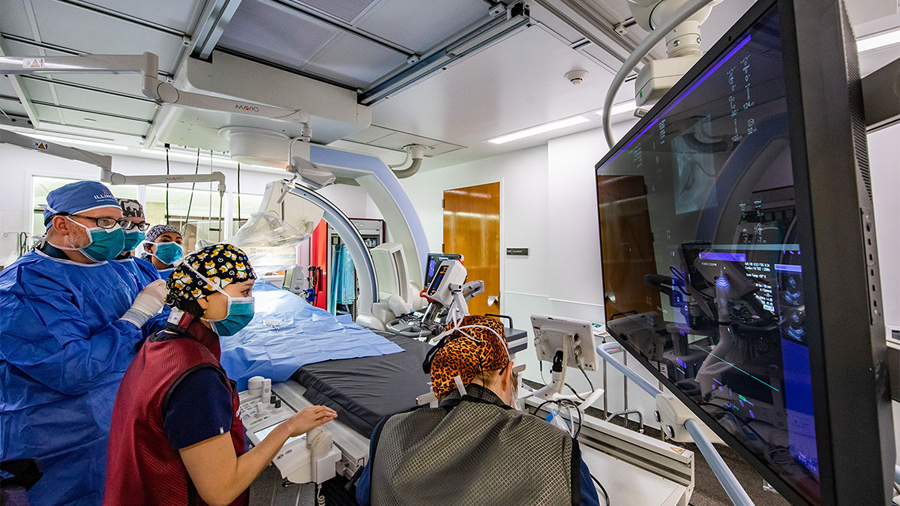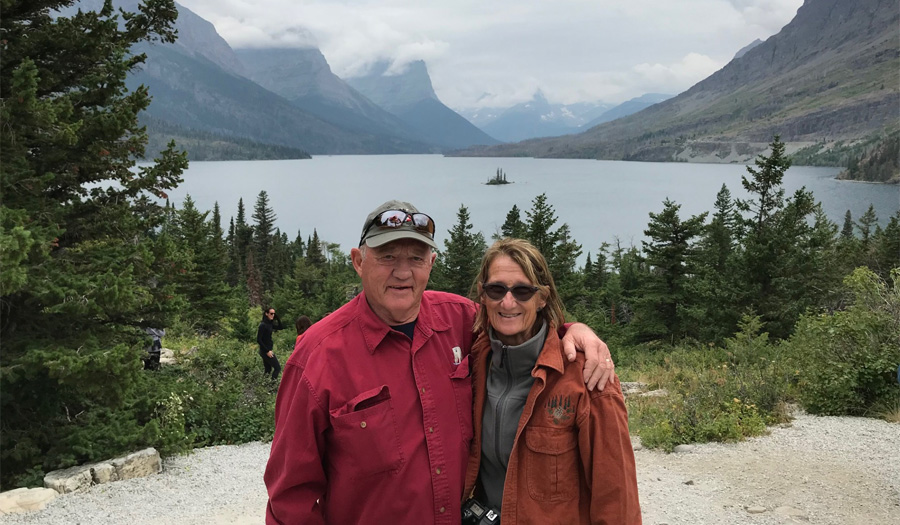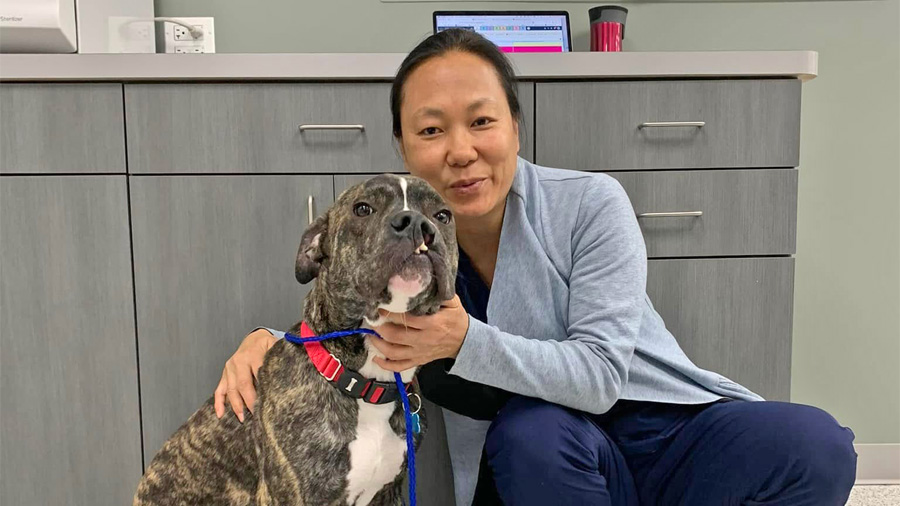Laurie Wiechert-Sharar has always felt a special bond with animals. She not only values their important role in the ecosystem, but also marvels at their beauty and majesty. That’s why she’s so appreciative of the Wildlife Medical Clinic.
“It’s a debilitating feeling when you can’t help injured wildlife,” says the resident of Normal, Ill., now retired from the social service and public health field. “We’ve called on the wildlife clinic several times, and they’ve always been so helpful. It’s great to have this resource close by.”
She credits the clinic’s doctors and student volunteers with having “the best technical hands, the best compassionate hands, to bring the best outcomes” for their wild patients.
‘Laurie Has a Gift’
Dave Sharar is the CEO of a community health and behavioral health system. Over the years, he has come to share his wife’s concern for the welfare of wild animals—so much so that he’s often the one wading through frigid water to safely capture an injured goose. They’ve also rescued a swan that was bleeding under one wing and a young crow that was unable to walk.
“We don’t seek them out,” he says, “but Laurie has a gift. The animals find her.”
The Sharars also firmly believe in giving. They have frequently donated to the Wildlife Medical Clinic, and in 2022 they established an estate gift for the clinic.
Citing habitat destruction and the increase in human-wildlife interface, Laurie and Dave say the need for resources like the Wildlife Medical Clinic is growing.
“I think of the catch phrase from the movie Ghostbusters: ‘Who you gonna call?’ There are so few places to assist in helping injured wildlife,” says Dave.
‘He Is out There Flying’
“The highlight of our rescue encounters,” says Laurie, “was saving a great blue heron that was having trouble flying.” After reviewing techniques on YouTube, they were able to retrieve the bird from the pond in their neighborhood and take it to the Wildlife Medical Clinic.
“One of the best feelings I’ll ever have was seeing this heron as the wildlife patient on the critter cam,” recalls Laurie, referring to the clinic’s webcam that features a current patient.
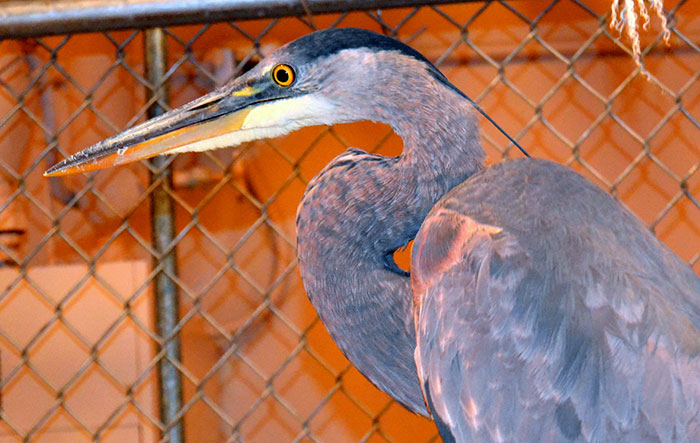
The heron was diagnosed with a broken ulna and a displaced bone near his clavicle. Although herons are notoriously poor eaters in captivity, this one adapted well during his recovery period at the Wildlife Medical Clinic, where he was able to catch fish from a kiddie pool in his enclosure. He recovered and was transferred to a rehab facility and later released.
“I hope so much that he is out there flying and enjoying every single minute of his life!” says Laurie. “Every time I see a heron flying into or walking on the banks of the pond behind our house, I can’t help but wonder if it is him.”
Note: The feature photo shows Dave and Laurie Sharar at home with their rescue cats, Orangie Simon (top) and Christopher Brewer. (Christopher Brewer has been a patient of the internal medicine specialists at the College of Veterinary Medicine Veterinary Teaching Hospital.)

